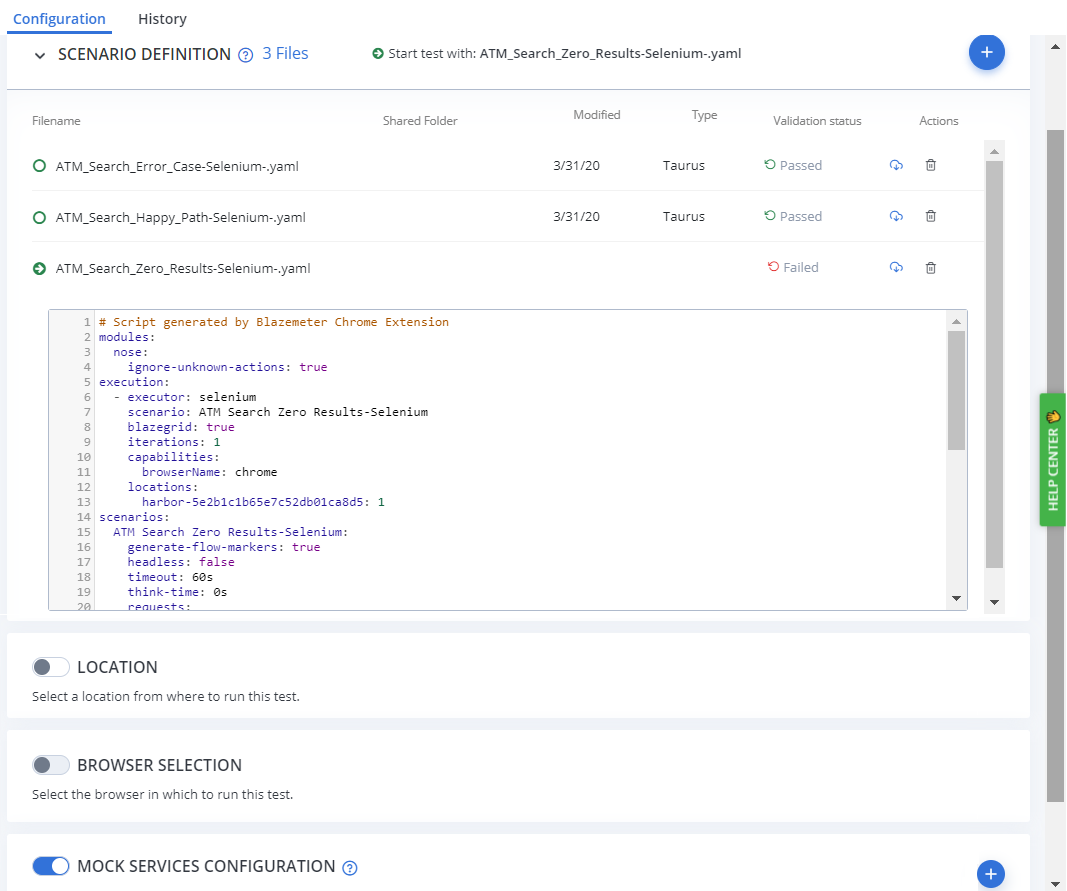Creating a GUI test by uploading a YAML file
If you opt to use a Taurus YAML file to execute your Selenium test, you can simply upload the file to BlazeMeter, then execute your test.
If you don’t have a Taurus YAML file, use the BlazeMeter Chrome extension to record a Selenium test.
To upload a YAML test file:
- Select the Functional tab.

- Click the Create test button near the top-center of the screen.

- Select a project.
- Click the GUI functional test button to create a new test.

- Click </> Script mode.
A dialog advises you not to switch back to ↯ UI mode if you intend to use your uploaded file. - Drag your YAML file over the "Upload Script" area, or click the "+" button to select a YAML file to upload.
 All Selenium commands must be within the YAML script itself. For this method, the YAML cannot reference a Selenium script file.
All Selenium commands must be within the YAML script itself. For this method, the YAML cannot reference a Selenium script file. - Review the test. Your YAML configuration appears in the Scenario definition pane. Any values that are defined in the YAML file appear read-only in the Test data pane.

- Click the Run test button to execute your test.

If you switch back to UI mode after uploading a YAML script, the YAML script is saved, and an empty Scriptless test is added. To run your YAML file, switch back to Script mode, scroll down past the Scriptless test, and enable the radio box for your YAML file again.
Test execution settings
- Location:
You can choose a specific public Cloud or private location to run the test. For more information, see Cloud vs private location and Get the location name. - Browser:
By default, the test runs in the latest Chrome browser. If you have created a private location that has other browsers and versions configured, you can select specific browsers in which to run the test. For more information, see GUI functional testing - Supported browsers. - Virtual services configuration:
If you have created a virtual services configuration, you can assign it to this test.
